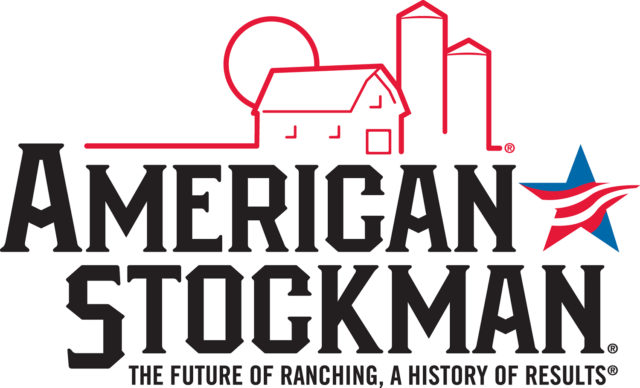Care and management of feet will depend on the individual horse, his conformation and hoof structure, environment and climate, and use. Whether or not the horse needs to be shod will also hinge on these factors.
Trimming and cleaning feet
Julie Bullock, DVM/podiatrist of Mount Sidney, Virginia, says horse owners should try to keep a barefoot horse’s feet tidy, with no rough edges to split or chip.
“They can do this themselves by rasping away superficial cracks and keeping edges smooth. Cracks and flares give pathogens an opening. I see a lot of white line disease in our area due to lack of foot care,” she says.
Periodic rasping around the edges can prevent or eliminate cracks and flares, but the sole should be left alone. It needs a thick callous.
Leave the barefoot horse with a slightly longer hoof wall than a foot you’d put a shoe on, but keep it very smooth – rasping whenever it becomes ragged.
She does not recommend cleaning out the feet regularly if the horse is at pasture (rather than standing in a stall or muddy corral).
“The bars, frog and sulcus of the frog are designed to allow dirt to pack in, creating a natural hoof pad,” explains Bullock.
Tia Nelson, DVM/farrier from Helena, Montana, says the dirt that packs into the feet helps, as part of the foot support, to protect and cushion the foot.
A horse at pasture shouldn’t need the feet cleaned. “You should periodically look at the feet, however, to make sure there are no cracks or problems,” says Nelson.
“The material that packs into the foot will fly out when the horse exercises,” says Bullock. Horses in the wild travel on abrasive terrain, which keeps their feet trimmed and smooth, and travel many miles as they graze and go to water. No one cleans or trims their feet.
“This doesn’t mean they can’t get cracks or flares, but they keep a tidy foot,” says Bullock. “It’s amazing what happens to a mustang from out West when it comes to the East Coast. We have more humidity and don’t have abrasive footing, and their feet deteriorate badly,” she says.
Climate and environment
“Environmental influences change requirements for hoof care,” says Bullock. “A horse that lives in dry conditions will have healthier feet. A sandy paddock – with more opportunity for feet to dry out – can help if you live in a wet environment.”
A humid climate presents challenges for keeping feet healthy. “This hard, dry, rocky environment in Montana, with decomposed granite soils, is the best footing for horses,” says Nelson. “If the foot is conformationally balanced, you won’t need shoes on a hard, dry foot.”
Hoof dressings and oral ‘hoof supplements’
“People who put dressings on the hoof wall to try to correct too-dry feet are missing the point because moisture in the foot is lost through the bottom of the foot, not the wall,” says Bullock.
Nelson has not been impressed with hoof dressings. “If you use one, make sure it’s not a petroleum-based product. Those are not as good as lanolin-based and organic-based products. If a horse’s feet are cracking, figure out why rather than just trying to treat the symptom,” says Nelson.
Cracking may be due to too much or not enough selenium, for instance. There may be a trace mineral imbalance or lack of physical balance – putting too much stress on one area of the foot.
Bullock is not a fan of oral hoof supplements. “Environment has more control over the foot than anything we can put in the horse’s gut,” says Bullock. If a horse has a well-balanced diet, he won’t need hoof supplements.
“Beware of fads, and this includes hoof dressings and supplements. If you use supplements, read labels. Ingredients are listed in order of amount. The first thing you see is the largest amount. Many hoof care products are mostly filler,” says Bullock.
“Biotin was the rage for a long time. Most hoof supplements contain biotin, but you can order straight biotin from a feed store a lot cheaper than some of the hoof care products,” she says. The horse usually gets enough biotin in his regular diet.
Most hoof supplements contain selenium, methionine and biotin. “Carefully watch the selenium,” says Nelson. “Signs of selenium overdose are very similar to the signs of deficiency – inferior hoof walls.”
Evaluate the horse’s whole diet and make sure you aren’t doubling up selenium supplements in feeds, mineral-salt blocks, vitamin-mineral products, etc.
“I’ve seen many people over-supplement with selenium, thinking they were doing a good thing, and turn their horses’ feet into cardboard. As soon as we eliminated the excess selenium, their feet grew out just fine,” says Nelson.
Many horses are over-supplemented, and this can be harmful. Bullock believes in keeping things simple. The horse is a hindgut fermenter, and his gut is designed to eat grass and good-quality hay. A commercial horse feed is technically a supplement.
The biggest problem she sees in her part of the country is obese horses, which is not healthy for feet and legs. Horses are not designed to have that much weight on their feet and may founder.
Importance of exercise
A horse that gets little or no exercise rarely has healthy feet. “If you want to grow more hoof, exercise the horse,” says Bullock. Blood circulation in the foot is always better if the horse is moving.
“When you put a horse in a stall, his legs will stock up (swell) because of decreased circulation. The legs are gravity-fed by blood, and unless the horse is moving, to push blood back up to the heart, the legs tend to swell,” she explains.
Nelson says it’s important to understand basic anatomy and conformation of the foot. “When you understand the circulatory patterns, you realize it’s mandatory that the horse has exercise. If he’s just standing, the frog is not stimulated.”
Horses should not be in stalls, if there’s any other alternative. “No matter how clean it is, they are still standing in ammonia and bacteria and not getting enough exercise,” says Bullock.
Many competition horses and racehorses live in very unnatural conditions and may be in a stall 23 hours a day.

No magic recipe for care of feet
“There is no formula for proper foot care and management practices because of diverse climate and soils,” says Bullock.
“I’ve seen horses do well barefoot in some circumstances and not in others,” says Nelson. “Look at the whole picture to decide whether they need a food supplement, a topical hoof application or shoes. There are no guidelines that fit every horse.”
You could have two horses of similar breeding, in the same environment, eating the same feed, doing the same work – and their feet may be different in their needs. Conformation and hoof make-up may be different.
Some have a longer pastern/shoulder angle, with different stresses on the toe. Some horses have harder or softer feet, or more brittle and prone to cracking.
Horsemen often want instant solutions. “There are no set rules, however, about what to do about certain problems because it’s variable with the individual horse,” says Nelson. It’s often trial and error to find how best to care for a certain horse’s feet.
Basic foot care consists of keeping things as simple as possible, avoiding fads, keeping the horse in as natural an environment as possible and trying to think how Mother Nature took care of horses.
The most important thing is to look at the individual situation, the individual horse and what works best for that horse. ![]()
Heather Thomas is a freelance writer based in Idaho.
PHOTOS
TOP: Roaming at pasture is a healthier situation for feet than standing in a stall or small pen.
BOTTOM: Feet should be checked and cleaned periodically. Photos by Heather Smith Thomas.









